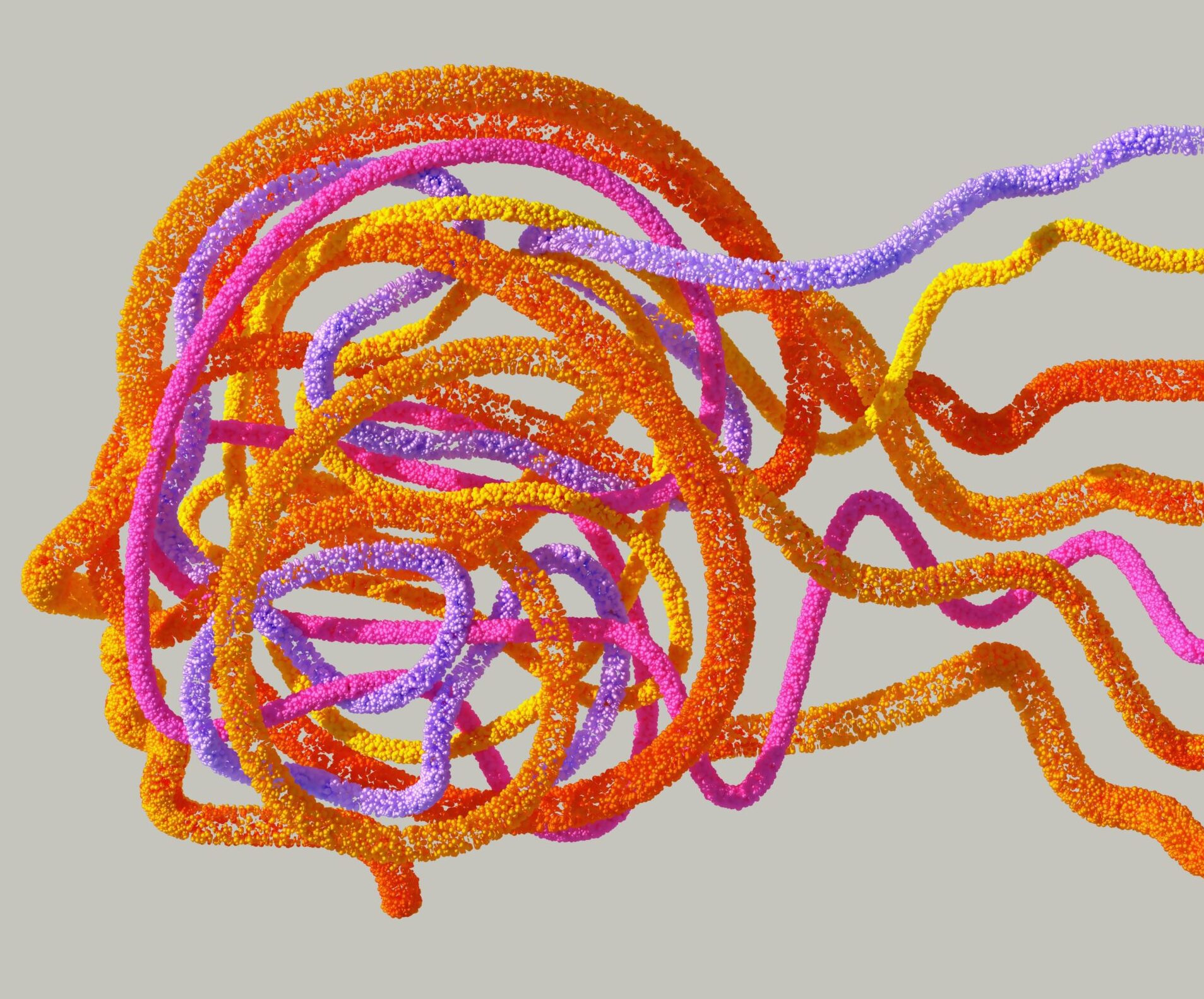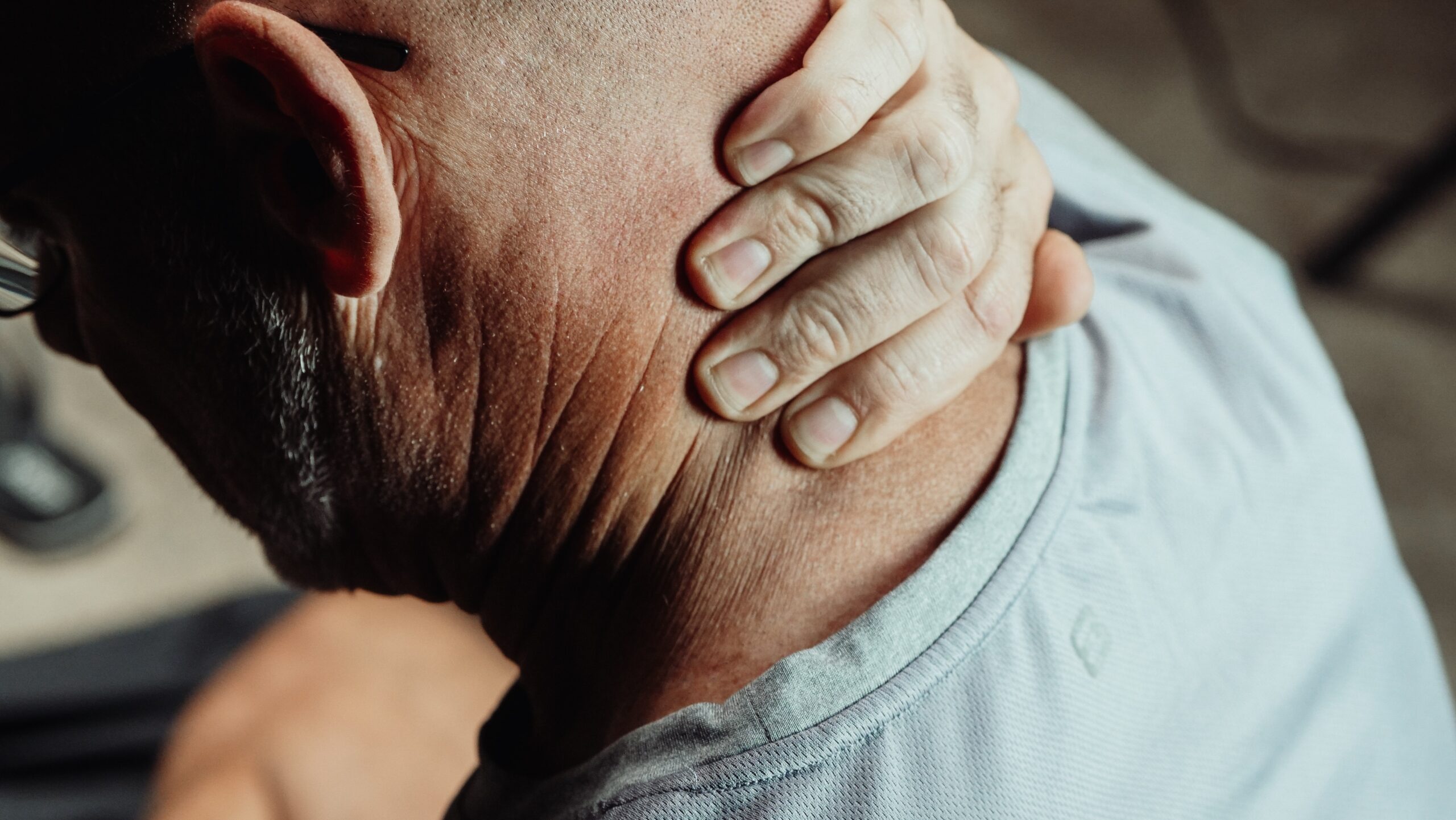If you have fibromyalgia, you know that pain is its main symptom. In fact, to be diagnosed with fibro, you must have significant, widespread pain that has lasted three months or longer. But not all pain is alike, and fibromyalgia can cause several different kinds of discomfort. Sometimes, it shows up as joint pain. Other times, it’s the skin that becomes extra sensitive, even to light touch. For most people, though, fibromyalgia pain shows up in the muscles.
So, in this article, we’ll dive into muscle symptoms in particular. We’ll discuss why fibromyalgia affects the muscles and where muscle pain and spasms come from. With the right treatments, you can begin to get some relief from your fibromyalgia muscle pain.
Why Is Muscle Pain Related to Fibromyalgia?
For people with fibromyalgia, muscle pain and spasms are typically a major symptom. Fibromyalgia causes pain throughout the musculoskeletal system – in the joints, but also in the muscles, and in the places where the muscles attach to bones: the tendons and ligaments. Muscle pain is so common with fibromyalgia that it is considered a hallmark or characteristic symptom.
What causes fibromyalgia muscle pain? Researchers believe it may be related to a process called central sensitization.¹ In this process, the brain’s neural pathways that receive and respond to pain get strengthened; the brain seems to “remember” pain, and it becomes overly quick to feel it again. Someone with central sensitization feels pain more easily and intensely than a person without the condition would under the same circumstances. It’s not about malingering or complaining; these are real, profound neurological changes in how the body experiences sensations.
Fibromyalgia muscle pain may also be related to myofascial trigger points.² These are chronically tight spots that develop in the muscles, usually after injury, strain, or repetitive stress.
What muscles does fibromyalgia affect? To be diagnosed with fibro, the pain must be widespread. This means it occurs on both sides of the body, and in both the upper and the lower body. For instance, you might have neck muscle pain, headache, backache, hip pain, arm muscle pain, and calf muscle pain. Fibromyalgia can cause pain in different parts of the body, all at once, or at different times. The frequently changing nature and location of the pain is one reason some doctors used to doubt that fibro was a real condition with a physiological cause; now, researchers know that’s not the case.
Types of Muscle Symptoms
Fibromyalgia pain is most often described as a dull, achy feeling, like the body aches that many people experience with the flu. But it can cause other muscle symptoms, too. Let’s take a look at the range of fibromyalgia muscle pain.
Muscle Spasms and Twitches
Fibromyalgia muscle spasms can be one of the most bothersome symptoms of this condition. A muscle spasm occurs when the muscle contracts and then won’t relax again. Everyone gets muscle spasms occasionally, and the prolonged contraction hurts no matter what. But it can feel worse when you have fibromyalgia, because of the way central sensitization makes your nervous system react strongly to new sensory input.
How do these muscle spasms get started? It may be a matter of exertion or overuse of the muscle. Sometimes, spasms are set off by habitual muscle tension – for example, you might tense your shoulders when you are under stress, and when the stress is especially bad, this can result in a muscle spasm in the shoulder and neck. Fibromyalgia muscle spasms may also be caused by myofascial trigger points.
Another possible muscle symptom with fibromyalgia is twitching. This happens when a muscle receives a nerve signal and, even though we didn’t mean to move it, and the muscle “jumps,” contracting briefly and immediately letting go again. These twitches are not usually painful, because the muscle doesn’t stay contracted, but they can be annoying. The exact cause of fibromyalgia muscle twitches is unknown, but they may be set off by muscle fatigue, muscle strain, stress, lack of sleep, anxiety, or caffeine.
Muscle Knots and Tightness
Many people with fibromyalgia have knots in the muscles throughout the body – small, localized bunches of chronically tense muscle tissue. Here again, myofascial trigger points may be the culprit. Once the spots become tense and painful, they tend to stay that way indefinitely. And not only do they cause pain in that particular spot, but they can also refer it to a nearby part of the body. For instance, a trigger point in the front of your neck might cause pain that you feel in your jaw.
Fibromyalgia can also cause a sensation of general tightness in the muscles. Even if you don’t notice a knot or locate a trigger point, you may have chronic muscle tension in a region of your body (such as the neck and shoulders) or in a specific location (such as the jaw).
Treating Fibromyalgia Muscle Pain
Whatever form it takes, fibromyalgia muscle pain can have a huge impact on your life. Muscle aches, spasms, knots, and tightness are uncomfortable, especially when they don’t seem to get better. Muscle twitches can be distracting, and they may make you self-conscious if you believe other people can see them.
Even if your symptoms come and go, you may be wondering when they’ll show up again. You may hesitate to exercise or even to do normal household chores or errands if you think these activities might set off a bout of muscle pain or spasms.
So, what can you do about fibromyalgia muscle symptoms? Fortunately, there are some options for relief.
Non-Drug Therapies and Exercises for Muscle Pain
The role of muscles is all about moving the body, and sometimes movement is the solution to muscle pain. Although movement can be challenging when you’re experiencing pain, even something as simple as getting up from your chair and moving around can help resolve muscle twitches and minor muscle spasms, because it gives the muscle something to do. The muscle may relax again after it has done the job you asked it to do.
Of course, that won’t always do the trick, so you’ll need some other strategies. Some people find it helpful to apply heat to the painful area. This relaxes tense muscles, dilates blood vessels to increase blood flow, and increases flexibility. A heating pad, microwavable hot pack, hot bath or shower, or hot water bottle can be very comforting. Use a cover or folded towel to protect your skin and keep the pack warm longer. To prevent burns, avoid falling asleep while using an electric heating pad, especially on a higher setting.
If the muscle pain has a hot, inflamed quality to it, you may find that a cold pack is more soothing than heat. You can also try alternating heat and cold, which can increase circulation to the area. Flexible gel packs can be stored in the freezer for use any time. In a pinch, you can even use a bag of frozen vegetables. As with a hot pack, be sure to use a cover or towel to protect your skin from very cold temperatures. Also note that some people with fibromyalgia have extreme sensitivity to heat, cold, or both. If this is the case for you, applying hot or cold packs probably isn’t something that will feel good to you.
Self-massage can soothe muscle pain and spasms. If you’re aware that you have trigger points, you can learn to massage them in a focused way using your fingers, a firm ball, or a foam roller. Massaging a trigger point can temporarily cause additional soreness in that spot, as well as strain in the hand you’re using to apply pressure, so take care not to overdo it.
So far, we’ve been focusing on in-the-moment remedies for muscle pain, spasms, and twitches. But what can you do to manage these symptoms over the long term? Working with a skilled trigger point massage therapist can help ease some of your trigger points for good. It’s also wise to take a look at the places you usually sit, stand, and lie down to be sure they are ergonomically suitable. Is it time to trade in your old mattress for a new one that is softer or more supportive? Would your favorite chair be more comfortable if there were a pillow behind your back? Would washing the dishes be easier on your back if you used an upside-down bowl to raise the dishpan from the bottom of the sink? For the things we do most often, a small adjustment can make a big difference.
Muscle pain can make you want to hold still. If you’re in the midst of a fibro flare, exercising may be the last thing you want to do. And, indeed, if you’re having a bout of especially intense pain, you’ll probably need to take it easy for a little while. But when you take a gentle pace and work up to it gradually, movement can be very beneficial in reducing fibromyalgia pain.³ Walking or yoga can be good choices. Swimming or water aerobics can also feel great. The water reduces stress and impact on your joints, and if you have access to a warm-water pool, the extra warmth can soothe and relax muscle tension that may be contributing to your pain.
If you’re just getting started with movement, or if you’ve tried it before and run into challenges, you may find it beneficial to see a physical therapist who has experience helping people with fibro. They can work with you to design a program of stretching, strengthening, and movement that suits your body. It’s important to move, and it’s also important not to overdo it. With time, and with some experimentation, you can find the balance that’s right for you.
Although it doesn’t directly target the muscles, cognitive behavioral therapy (CBT) can be very effective as a treatment for fibromyalgia pain.⁴ CBT and related therapies such as Acceptance and Commitment Therapy (ACT) help you work with your thoughts and behaviors. You can learn to take a completely new perspective on your symptoms. When you do, you may find that you suffer less and feel freer to do the things in life that are important to you, including movement that helps relieve muscle pain.
Medication for Muscle Pain
What about medication for fibromyalgia muscle pain? Are there drugs that can help with these symptoms? For many people with fibro, medication will be part of the plan for getting relief. To start with, your doctor may advise you to try over-the-counter anti-inflammatory drugs like ibuprofen or naproxen. Anti-seizure drugs (like pregabalin) or antidepressants (such as duloxetine and milnacipran) are often prescribed to help with fibromyalgia pain.
Are muscle relaxers good for fibromyalgia? If you have moderate to severe muscle spasms or tension, your doctor may suggest that you try a muscle relaxer such as cyclobenzaprine or tizanidine. The Food and Drug Administration has not approved cyclobenzaprine or tizanidine to treat fibromyalgia, but some doctors prescribe it off-label.
Some studies have shown that these muscle relaxants help with fibro pain, while others showed no benefit.⁵ For many people, this drug has a side effect of causing sleepiness. This means that if you take it during the day, it can make your “fibro fog” or fatigue seem worse. On the other hand, if you take it at night, it may help somewhat with sleep.
In addition to oral medications, some doctors use trigger point injections for fibromyalgia muscle pain. These are shots of saline, steroids, or a local anesthetic injected directly into the trigger point to reduce pain. There isn’t much research about the efficacy of trigger point injections specifically for fibromyalgia muscle pain, but studies show that they can help with myofascial pain syndrome (MPS),⁶ and many people with fibro also have MPS. If you’d like to explore this option, ask your doctor for a referral to a pain management specialist.
Take your time in exploring the treatment options for fibromyalgia muscle symptoms. It may take some experimentation to discover what works for you. For many people, the answer is not a single treatment but rather a combination of approaches. If you don’t feel you’re getting adequate relief, it’s okay to let your doctor know that you’d like additional support in managing your symptoms. You may also wish to explore treatment with a fibromyalgia specialist.
Medically Reviewed by Dr. Andrea Chadwick, MD
Sources
¹ Harte, S. E., Harris, R. E., & Clauw, D. J. (2018.) The neurobiology of central sensitization. Journal of applied biobehavioral research 23(2). https://doi.org/10.1111/jabr.12137
² Doraisamy, M. A., Anshul. (2011). Effect of latent myofascial trigger points on strength measurements of the upper trapezius: A case-controlled trial. Physiotherapy Canada 63(4):405-409. doi:10.3138/ptc.2010-27
³ Busch, A. J., Webber, S. C., Brachaniec, M., Bidonde, J., Bello-Haas, V. D., Danyliw, A. D., Overend, T. J., Richards, R. S., Sawant, A., & Schachter, C. L. (2011). Exercise therapy for fibromyalgia. Curr Pain Headache Rep. 15(5):358-67. doi: 10.1007/s11916-011-0214-2
⁴ Thieme, K., Flor, H., & Turk, D.C. (2006). Psychological pain treatment in fibromyalgia syndrome: Efficacy of operant behavioural and cognitive behavioural treatments. Arthritis Res Ther 8, R121. https://doi.org/10.1186/ar2010
⁵ Smith, B., Peterson, K., Fu, R., et al. (2011). Drug Class Review: Drugs for Fibromyalgia: Final Original Report. Portland, OR: Oregon Health & Science University. https://www.ncbi.nlm.nih.gov/books/NBK55556/
⁶ Parthasarathy, S., Sundar, S., & Mishra, G. (2019). Assessment of predisposing factors in myofascial pain syndrome and the analgesic effect of trigger point injections: A primary therapeutic interventional clinical trial. Indian J Anaesth 63(4):300-303. doi: 10.4103/ija.IJA_6_19. PMID: 31000895; PMCID: PMC6460974.












